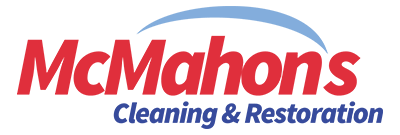DIY Mold Removal And Why It's A Bad Idea
Is DIY Mold Removal A Good Idea?
It is estimated that around 70% of homes in the United States have mold growing behind the walls. In the right conditions, that mold can spread throughout the household.
There are many types of mold, and their presence causes a range of reactions from mild irritation to death. Most commonly, people will experience allergic reactions such as a dry cough, difficulty breathing, itchy red eyes, nasal congestion, and irritation within the sinuses. More severe irritations can cause shortness of breath and symptoms like hay fever. If you have asthma, mold can induce an attack. In some cases, molds can cause significant infections and have toxic effects. Those symptoms are intense and hard to pinpoint, like memory problems, mood swings, body aches, nosebleeds, and headaches. Some mold can even prove fatal.
Mold is not to be taken lightly and isn't something you want to expose yourself to intentionally without the proper gear or knowledge on keeping yourself safe. Since there are so many different types, it's imperative to have your issue correctly assessed. Molds react to chemicals in different ways, depending on what variety they are. While some can be wiped out with simple dish soap, others require professional-grade chemicals to get rid of. Mixing those chemicals yourself can send toxic vapors through the air. And if the proper treatment isn't applied, the mold will most likely return and continue spreading.
You don't even have to come in direct contact with mold for its harmful effects to kick in. Its spores spread through the air and cause those reactions when inhaled or ingested. The spores disperse even further once they enter the house's air conditioner or ducts and vents.
In some cases, mold grows after a flood. FEMA says it can appear in as little as 24 hours after water exposure and will continue growing until the fungus is entirely removed and the source of moisture that allowed for its growth is eliminated. In many cases, that means cutting out parts of walls, replacing drywall, removing insulation, uprooting carpeting, and more. Of course, none of that can be done until the water is drained. Industrial fans must also be brought in to dry the rest of the place out before more mold can develop.
Taking a saw and hammer to your home is not something you should do by yourself. Imagine if you did all that work and didn't even rid your home of the source of the mold entirely. It can grow right back, and all your hard labor would be for nothing. That hard work happens while putting yourself at risk of medical danger. You may also be responsible for spreading the infestation to a separate house area.
Some people try to seek out mold by searching around for it or even smelling the air and trying to pinpoint where the musty scent is wafting from. Again, disturbing an existing mold infestation can lead to rapid spread, and inhalation of spores can have disastrous results.
Since mold can grow in so many hidden areas, searching or sniffing for it isn't always going to yield the best results. This is especially true without the proper knowledge and training. Tests or samples to investigate a pervasive mold problem should be handled by licensed professionals. The EPA concurs. The agency says experts should handle moldy areas that expand beyond a single small patch. However, part of the problem in trying to do things yourself is that you won't be aware of the full scale of the contaminant. Just because you see one patch doesn't mean there are no others, and scrubbing mold off that single patch is like trying to empty the ocean with a teaspoon.
McMahons Cleaning & Restoration experts have over extensive experience ridding homes and businesses of mold growth. You can rest assured that we are dedicated to doing thorough inspections and remediation so your property is left mold-free.

